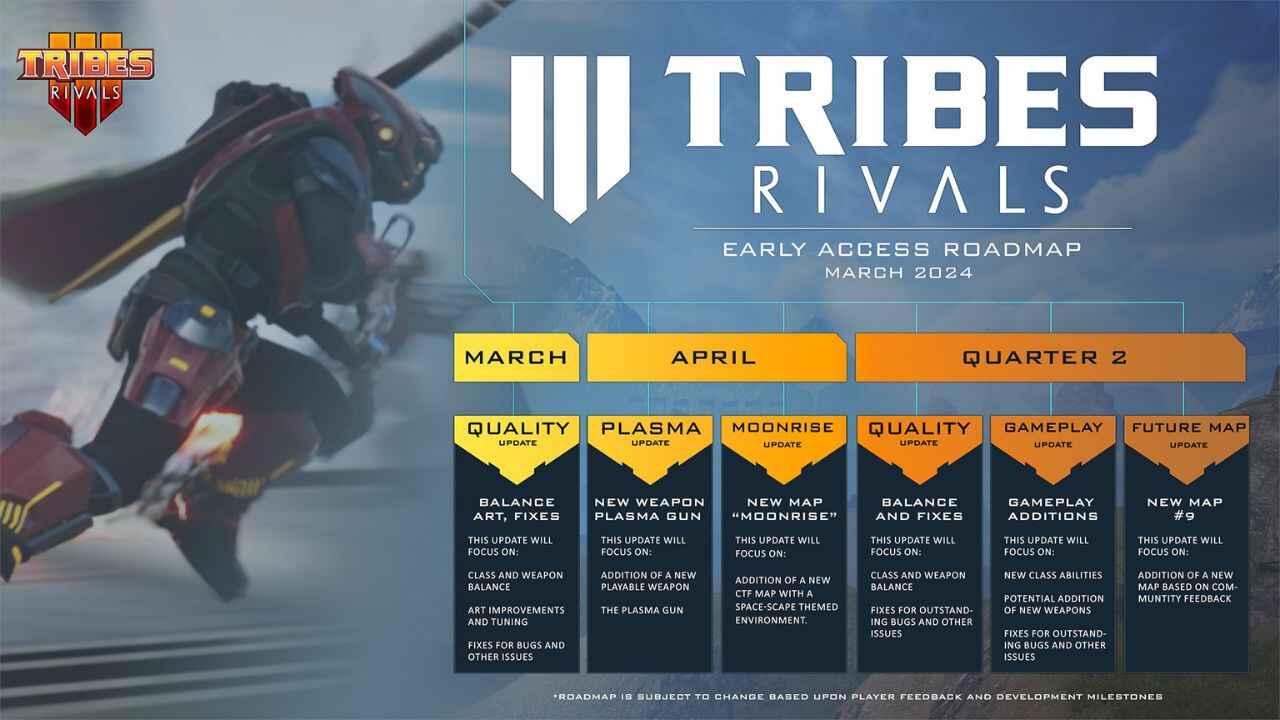
The gaming world greeted the announcement of a new Tribes game, Tribes 3: Rivals, with trepidation and excitement. After a decade of dormancy, the return of the iconic jetpack-powered, high-speed shooter franchise should be cause for celebration. Yet, the early access launch of Tribes 3: Rivals (T3) has stirred up a maelstrom of criticism, leaving fans and newcomers wondering – is it worth the investment of time and money?
A Primer on Tribes and its Troubled History
To understand the polarized response to T3, let’s recap the complicated legacy of Tribes:
- Tribes (1998) and Tribes 2 (2001): Pioneering first-person shooters that popularized a unique brand of movement-focused, large-scale combat. Sadly, dwindling support tarnished the latter title’s shine.
- Tribes: Ascend (2012): Hi-Rez Studios revived the franchise with this free-to-play entry and then largely abandoned it a year later to focus on the MOBA SMITE.
In recent years, development house Prophecy Games unveiled plans for a new Starsiege game (the broader IP encompassing Tribes). However, Starsiege: Raiders, a looter shooter, vanished after a 2022 demo. An extraction shooter, Starsiege: Deadzone, mysteriously had its Steam listing removed in February 2023. This rollercoaster ride of announcements and cancellations has left fans wary.
Adding to this uncertainty, industry figure Erez Goren founded both Hi-Rez and Prophecy. While intended to be separate, the close proximity of the studios fuels the perception that Prophecy exists under Hi-Rez’s shadow and that history might repeat itself.
TRIBES 3: Rivals goes into early access!
byu/Rolex_Flex inpcgaming
The Highs and Lows of Tribes 3: Rivals
On its own, Tribes 3: Rivals is not inherently bad. At its core, some of Tribes’ DNA is present – speed, jetpacks, and the thrilling physics of its signature “skiing” mechanic. It’s the drastic departures and concerning trends behind the scenes that have tarnished the experience for many.
Missing Staples and Monetization Concerns
Shockingly, Tribes 3: Rivals lacks fundamental features standard to the series – namely, a server browser, in-game text chat, and any form of community-driven moderation. Omissions like these raise questions of what “Tribes” even means in this context.
Decisions surrounding the game’s monetization send equally troubling signals. Hi-Rez’s legacy of monetizing community-created content casts a long shadow. The decision to exclude tools for skinning, mapping, modding, and scripting could be seen as a way to maintain a tight grip on how players can spend money within the game.
Is this Truly Tribes?
For many fans, Tribes 3: Rivals feels like a watered-down clone of Tribes – an echo, not a rebirth. Key changes fly in the face of what made the series unique:
- The Arena Effect: Maps are small, and player counts are often limited. This shrinks Tribes’ trademark sense of scale, where speed and maneuverability were vital.
- Missing Modes: Capture-the-Flag is the sole offering, leaving little variety for those who loved the expansive, objective-based battles of the originals.
- Bots and Balance: Bot opponents are plentiful and poorly labeled. This, alongside balance issues, leads to predictable blowouts and a shallow gameplay loop.
The team-based first-person shooter TRIBES 3: RIVALS has been released for PChttps://t.co/b637toQg8m#games #videogames #gaming #pcgames #pcgaming #indiegame #indiegames #tribes3 #tribes3rivals #fps #shooter #multiplayer @ProphecyGamesNA @Tribes3Rivals pic.twitter.com/0SDqADqRUG
— Entertainment Factor (@The_Ent_Factor) March 13, 2024
The Generative AI Factor and the Abandoned Game Mode
One of T3‘s most controversial elements is its reliance on generative AI to create assets. While a fascinating technological experiment, it can lead to generic, lifeless content.
Worse yet, a well-advertised game mode present in the release trailer was abruptly removed and repositioned as a future paid stand-alone experience. The timing of this, just before early access launch, raises questions about the studio’s transparency and priorities.
“Early Access”… or Barely an Alpha?
The CEO’s claim that Tribes 3: Rivals is essentially feature-complete, with only minor tweaks and a few extra maps and weapons to come, is baffling. Such language clashes drastically with the state of the game, both in terms of content and polish. It suggests that the “early access” label is less about community involvement and more about justifying an incomplete product at launch.
Pricing and DLC: A Cause for Concern
The elephant in the room is the cost. Two iconic Tribes skins are locked behind separate $40 DLC bundles, each providing limited-release daily skins for a year. Unlocking all this content would easily exceed $100, creating a steep barrier to entry and fueling fears of exploitative FOMO tactics (Fear Of Missing Out). While battle passes and virtual currency have yet to appear, the precedence is worrying.
A Wait-and-See Approach
Ultimately, deciding whether the current iteration of Tribes 3: Rivals is worth $39 comes down to a matter of expectations and faith. If you yearn for a Tribes experience that captures the soul of the originals, you’re likely to be disappointed. This feels more like a high-speed arena shooter that wears a Tribes skin than a true sequel.
Potential does exist. T3 could evolve over time, driven by community feedback and potential developer commitment. But given the franchise’s troubled past, it’s wise to remain cautious. Let the game mature past early access, allowing Prophecy to prove they’re ready to invest in the core of what Tribes should be. Only then can you judge whether a return to this once glorious world is worth your time and money.
Read More











